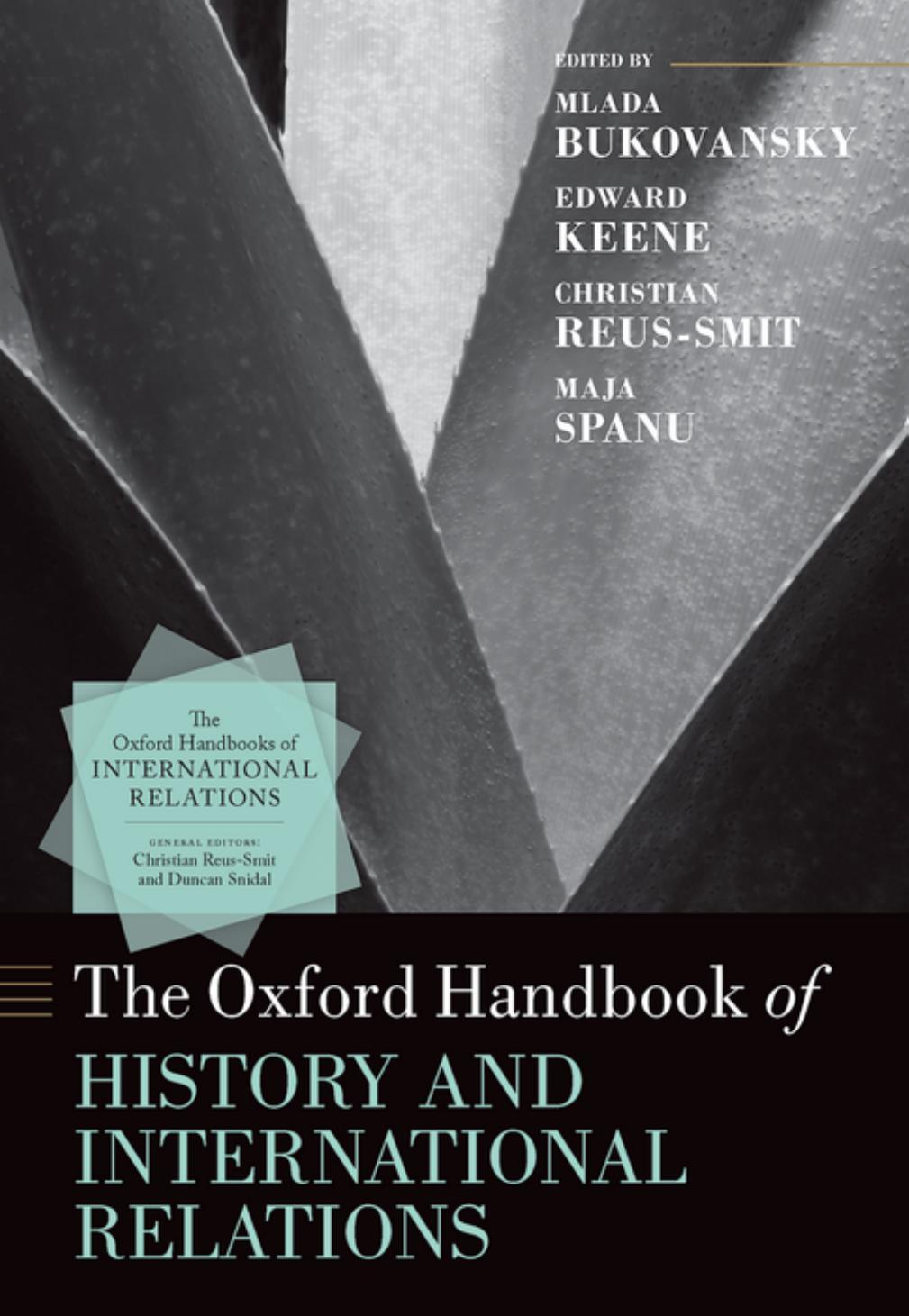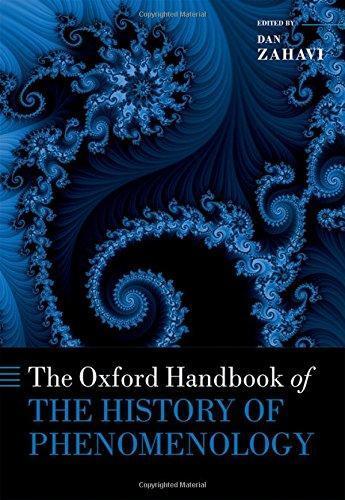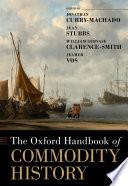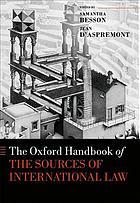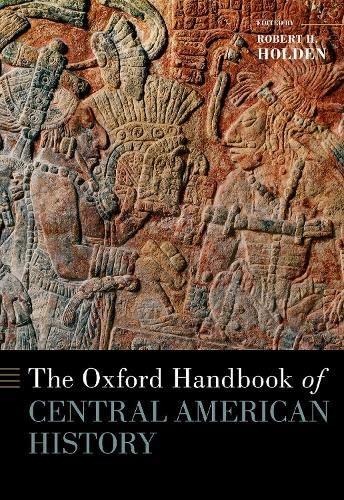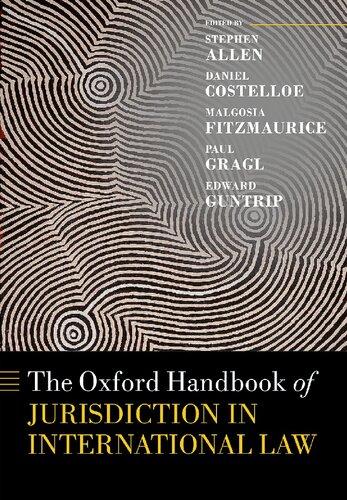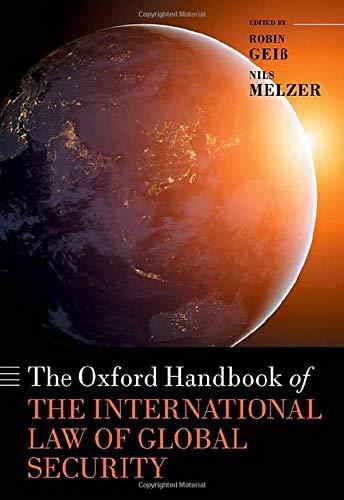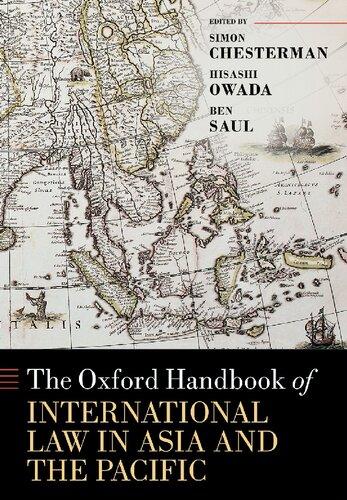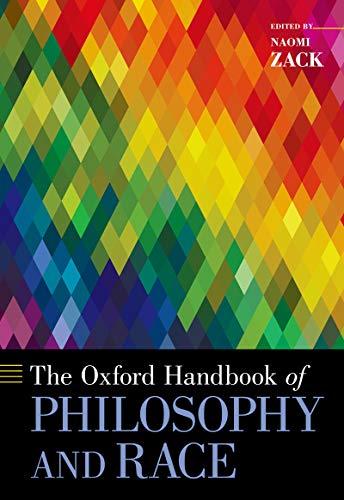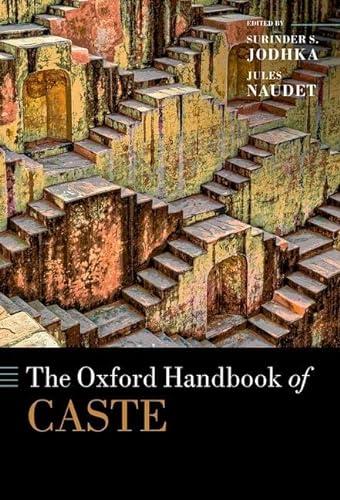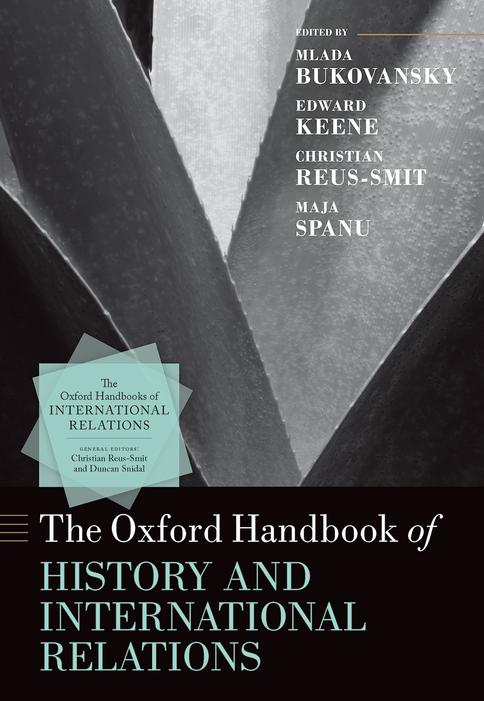List of Contributors
Lucian M. Ashworth is Professor of Political Science in the Department of Political Science at the Memorial University of Newfoundland.
Tarak Barkawi is Professor of International Relations at the London School of Economics and Political Science.
Martin J. Bayly is Assistant Professor in International Relations Teory in the International Relations Department at the London School of Economics and Political Science.
Duncan Bell is Professor of Political Tought and International Relations at the University of Cambridge.
Lauren Benton is Barton M. Biggs Professor of History and Professor of Law at Yale University.
Jordan Branch is Associate Professor of Government at Claremont McKenna College.
Quentin Bruneau is Assistant Professor of Politics at the New School for Social Research.
Mlada Bukovansky is Professor of Government at Smith College, Northampton Massachusetts.
Zeynep Gulsah Capan is Senior Lecturer in International Relations at the University of Erfurt.
Chen Yudan is Associate Professor in International Politics in the School of International Relations and Public Afairs at Fudan University.
Julia Costa Lopez is Assistant Professor in History and Teory of International Relations at the University of Groningen.
Alexander E. Davis is Lecturer in Political Science (International Relations) at the University of Western Australia School of Social Sciences.
Megan Donaldson is Associate Professor of Public International Law at University College London.
Linda Frey is Emeritus Professor of History at the University of Montana.
Marsha Frey is Emeritus Professor of History at Kansas State University. Michel Gobat is Professor of History at the University of Pittsburgh.
Daniel Gordon is Professor of History at the University of Massachusetts Amherst.
Daniel Gorman is Professor of History at the University of Waterloo and a faculty member at the Balsillie School of International Afairs.
Daniel M. Green is Associate Professor of International Relations in the Department of Political Science at the University of Delaware.
Jonathan Harris is Professor of the History of Byzantium at Royal Holloway, University of London.
Eric Helleiner is Professor and University Research Chair in the Department of Political Science at the University of Waterloo.
Talbot Imlay is Professor of History at the Université Laval in Quebec.
Peter Jackson holds the Chair in Global Security (History) in the School of Humanities at the University of Glasgow.
David C. Kang is Maria Crutcher Professor of International Relations at the University of Southern California.
Edward Keene is Associate Professor of International Relations at the University of Oxford and Ofcial Student of Politics at Christ Church.
Duncan Kelly is Professor of Political Tought and Intellectual History in the Department of Politics and International Studies, University of Cambridge and a Fellow of Jesus College.
George Lawson is Professor of International Relations in the Coral Bell School at the Australian National University.
Richard Ned Lebow is Professor of International Political Teory in the War Studies Department of King’s College London and Bye-Fellow of Pembroke College, University of Cambridge.
Christopher J. Lee is Professor of African History, World History, and African Literature at Te Africa Institute, Sharjah, United Arab Emirates.
Cecelia Lynch is Professor of Political Science at the University of California.
Nivi Manchanda is Senior Lecturer in international politics at Queen Mary University of London.
James Mayall is Emeritus Sir Patrick Sheehy Professor of International Relations at the University of Cambridge and a fellow of Sidney Sussex College.
Jennifer Mitzen is Professor in the Department of Political Science at Ohio State University.
A. Dirk Moses is the Anne and Bernard Spitzer Chair of International Relations at the City College of New York.
Jeppe Mulich is Lecturer in Modern History in the Department of International Politics at City, University of London.
Jacinta O’Hagan is Associate Professor in International Relations in the School of Political Science and International Studies at the University of Queensland.
Maïa Pal is Senior Lecturer in International Relations at Oxford Brookes University.
Andrea Paras is Associate Professor in the Department of Political Science at the University of Guelph.
John Anthony Pella, Jr is a Research Fellow in the School of International Afairs at Fudan University.
Benoît Pelopidas is Associate Professor of International Relations at Sciences Po (CERI).
Andrew Phillips is Associate Professor of International Relations and Strategy in the School of Political Science and International Studies at the University of Queensland.
Signe Predmore is a PhD Candidate in Political Science and Women, Gender & Sexuality Studies at University of Massachusetts Amherst.
Christian Reus-Smit is Professor of International Relations at the University of Queensland and a Fellow of the Academy of the Social Sciences in Australia.
Jef Rogg is Assistant Professor in the Department of Intelligence and Security Studies at Te Citadel.
Or Rosenboim is Director of the Centre for Modern History and Senior Lecturer at the Department of International Politics at City, University of London.
Karl Schweizer is Professor in the Federated Department of History at NJIT/Rutgers University.
Eric Selbin is Professor and Chair of Political Science & Holder of the Lucy King Brown Chair at Southwestern University.
Laura Sjoberg is British Academy Global Professor of Politics and International Relations and Director of the Gender Institute at Royal Holloway, University of London.
Maja Spanu is Afliated Lecturer at University of Cambridge and Head of Research and International Afairs, Fondation de France.
Jan Stockbruegger is a Postdoctoral Fellow in the Department of Political Science at Copenhagen University.
Chika Tonooka is a Research Fellow in History at Pembroke College, University of Cambridge.
Corinna R. Unger is Professor of Global and Colonial History (19th and 20th centuries) at the Department of History, European University Institute.
Claire Vergerio is Assistant Professor of International Relations at Leiden University’s Institute of Political Science.
R. B. J. Walker is Professor Emeritus of Political Science, University of Victoria and Professor Colaborador do IRI, PUC-Rio de Janeiro.
Michael C. Williams is University Research Professor of International Politics in the Graduate School of Public and International Afairs at the University of Ottawa.
Kevin L. Young is Associate Professor in the Department of Economics at the University of Massachusetts, Amherst.
Musab Younis is Lecturer in Politics and International Relations at Queen Mary University of London.
Ayşe Zarakol is Professor of International Relations at the University of Cambridge and a Politics Fellow at Emmanuel College.
Yongjin Zhang is Professor of International Politics in the School of Sociology, Politics and International Studies at the University of Bristol.
Modernity and Granularity in History and International Relations
Mlada Bukovansky and Edward Keene
The idea for this Handbook on History and International Relations originated from two propositions. One is that we cannot make sense of how international relations work without understanding the history of how diferent forms of global political orders have developed; the other is that the history of the world as a whole cannot be written without taking account of the existence of an international system (or systems) on a global scale. To capture the various dimensions of this interdependence between the academic disciplines of International Relations (IR) and History, the Handbook is organized around ‘Readings’, ‘Practices’, ‘Locales’, and ‘Moments’. Te frst section, ‘Readings’, examines the contexts within which the encounter between historians and IR scholars takes place, with writers from both felds refecting on diferent ways in which their inquiries intersect. Tereafer we look outward to see how current research is re-shaping our understanding of how the world we live in today developed. Rather than work towards a single grand overarching narrative here—the story of historical IR—our goal is to show how diferent perspectives inform our sense of the international and global dimensions of historical becoming in a rich variety of ways.
To establish coherence and points of comparison across this diversity, we have asked all our authors to focus on two key themes that give them a number of ‘hooks’ on which they can pin their analyses. We will explain these in more detail next, but it may be helpful to give a brief summary of these fundamental elements of our project here at the very beginning of this introductory chapter, to explain how they inform the arrangement of the Handbook across its various sections, so that readers can approach the many chapters presented here with a clearer understanding of how the volume is organized, and why we have chosen to arrange it that way.
Te frst set of questions we posed for our authors is about the chronological development of diferent ways of ordering the international, and how to navigate between structural
change and continuity. To do this, we chose to adopt a focus on modernity as an organizing concept, or possibly critical foil. We recognize that there are potential dangers in putting this idea at the centre of our refections on history and IR, and that some would see a fxation with modernity as a signifcant source of problems within mainstream IR scholarship. For example, the chapter by Ayse Zarakol on ‘Modernity and Modernities in IR’ (Chapter 28) ofers the most direct engagement with this theme, and illustrates the refective and critical manner in which we hope to handle the concept throughout the Handbook. Zarakol mounts a forceful argument that the academic discipline of IR has been powerfully infuenced by a specifc version of modernization theory that generates a number of dubious propositions, provocatively labelled as three distinct ‘Wrong Answers’ to the questions of what modernity is, who made it, and how it interacted with other ways of organizing social, economic and political life as it spread around the world. Zarakol contends that all of these ‘Wrong Answers’ spring from an over-commitment to ‘the idea that “modernity” is a unique set of developments that was experienced frst or only by the West’ and radically underestimates the agency of non-Western actors.
One important consequence of this is a tendency for IR theory to coalesce around a particular conception of state sovereignty, and it is clear that this risks importing a specifc Western perspective into any treatment of historical IR and international history. We have therefore actively encouraged authors to imagine multiple modernities, alternative meta-narratives, and diferent pathways of change that, in Zarakol’s words, will reveal ‘a more open-minded survey of global history’. To take another example of the kind of work that this involves, consider the account of global legal history ofered by Lauren Benton (Chapter 22), which rejects the narrow focus on Western sovereignty contained in Zarakol’s ‘Wrong Answers’, and highlights instead the importance of ‘interpolity zones, or regions marked by interpenetrating power and weak or uneven claims to territorial sovereignty’. We believe that thinking about the relationship between IR and History requires us to understand both traditional state-centric answers to the question of how the distinctively modern international system came into being and developed, and the critical responses from scholars such as Benton (2010) that contest these formulations today and embrace a much wider range of forms of global political ordering. By establishing ‘modernity’ as one of the organizing themes for the Handbook, we hope both to acknowledge its central signifcance in the development of historical IR, and to expose it to radical scrutiny as a limiting factor on our ability to comprehend the complexity of how the international has developed within a global context.
Te second theme tries to unlock the potential for generating fresh insights by adopting diferent framings in geographical space, historical time, and levels of both agency and structure, which we articulate through the idea of granularity. Te sections on ‘Practices’, ‘Locales’, and ‘Moments’ are all intended to ofer opportunities either to step back to contemplate the very broadest kind of analysis, or to zoom in on the personal and micro-political aspects of the day-to-day. An example of the former is Linda and Marsha Frey’s chapter on the practice of diplomacy (Chapter 13), which gives a sweeping survey that runs from the earliest periods of recorded history up to the twentieth century in what one might call the ‘grand manner’ of diplomatic history; whereas for the latter, one could look at Christopher Lee’s analysis of the Bandung Conference (Chapter 47) which homes in on the specifc details of a particular moment, and uses them as a way to think about the wider signifcance of this precise event, and the persistent myths that fowed from it. Tese two chapters ofer almost polar opposites
of the diferent scale on which the encounter between IR and History might be envisaged. In between, our authors adopt a host of diferent perspectives. Several chapters—Eric Selbin’s on ‘Revolution’ (Chapter 26), for example—aim to show how understandings of specifc phenomena can shuttle back and forth between micro- and macro-perspectives.
It is fair to say that ‘Practices’ invites the longue durée, whereas the examination of ‘Moments’ inevitably brings one up close to the personal and the immediate. However, several of our authors break up this expectation. To take just one example, Musab Younis’s fascinating study of the Haitian Revolution (Chapter 39) not only dives into the details of what this moment represents as a specifc event within the historical development of the international politics of the late eighteenth and early nineteenth centuries, but also uses it as a stimulus to expose ‘the limitations of the very categories we use to measure signifcance and meaning when we study the international’, and concludes by suggesting how an intellectual history of the Haitian revolutionaries’ own self-understandings could be the basis for an alternative perspective on the international grounded in ‘anticolonial and postcolonial cultural nationalism.’ At the same time, somewhat more cautiously, Megan Donaldson’s analysis of the Sykes–Picot agreement of 1916 (Chapter 45) warns about how the question of scale opened up by this granularity theme raises the possibility that something may be lost as we move from one perspective to another, how we can see very diferent things from diferent vantage points, and how indeed some of these may be illusory.
Te section on ‘Locales’ stands, as it were, in between the opposite ends of the spectrum of granularity, and each chapter here gives its author an opportunity to examine the categories that we frequently, and ofen unthinkingly, use to organize discrete subject areas for thinking about historical IR. We think two of these are particularly signifcant: periodization and regionalization. Historians and IR scholars tend to break their subject matter up either into delimited chunks of time (e.g. the ‘early modern’ period, the ‘long nineteenth century’), or into distinct geographical spaces (e.g. the idea of regional international systems in Asia or Africa). Tere is a sense in which these categorizations would not exist, or be so popular, if they did not capture something important and valuable, and so our purpose is not simply to criticize or dismiss these as organizing devices for scholarship. Many of the chapters here, such as Quentin Bruneau’s study of the ‘long nineteenth century’ (Chapter 31), broadly work within this periodization, presenting current scholarship on how it is conceived in History and IR, and sometimes (as in Bruneau’s case) ofering novel interpretive insights into how we should understand it and its place within the wider set of stories of historical IR. Nevertheless, several chapters, such as Zarakol’s chapter on modernity discussed above, or Julia Costa Lopez’s account of the ‘pre-modern’ world (Chapter 27), seek to unsettle these conventional ways of carving up the huge expanse of historical time and geographic space that we are operating within. As Costa Lopez warns, for example, ‘approaching the premodern with periodization-derived preconceptions about its signifcance prevents us from doing anything but confrming our own prejudices—whatever those may be’.
Our choice of specifc ‘Locales’, ‘Practices’, and ‘Moments’ to include in the volume has been guided by our desire both to inform the reader of conventional wisdoms about historical IR, and to challenge these or open up new vistas. For example, among our ‘Locales’ we have a chapter not on the geographical space of Europe as such but on the imaginary of the ‘West’, which (as Jacinta O’Hagan shows in Chapter 29) is the subject of multiple narratives that depict it as variously ‘civilizational’, ‘liberal’, and ‘fragmenting’. Tis highlights the way that we do not simply take regional classifcations as starting points for analysis,
but as socially constructed entities whose meaning needs to be interrogated. As O’Hagan remarks, the ‘West’ is not so much a geographically designated part of the world, but rather it constitutes ‘an imagined community that has acted as a strategic and normative reference point for the constitution of agency and identities in international relations’. Tis clearly connects with and amplifes Zarakol’s point discussed previously, where the understanding of ‘modernity’ in much IR and historical scholarship has traditionally been a vehicle for privileging one view of the ‘Western’ experience of global political ordering at the expense of alternative perspectives.
In a similarly critical vein, while our list of ‘Moments’ acknowledges some that would feature prominently in any textbook, such as the Peace of Westphalia (even if, as Andrew Phillips explains in Chapter 37, much of the signifcance of this moment may be misconceived), we have deliberately tried not to make this just a collection of canonically recognized turning points. Instead, within the obvious limitations in terms of the number of ‘Moments’ we can possibly cover, we have tried to include some where we think that there is a disappointing absence of scholarly connections between historians and IR scholars, such as Dan Green’s examination of the European revolutions of 1848 (Chapter 41). Moreover, mindful of the importance of non-Western agency, we especially want to take the reader to places around the world that might have been missed by the Eurocentric gaze of traditional narratives: we start this section with Jonathan Harris’s study of arguably one of the most globally momentous moments in the shaping of the modern world, the Ottoman conquest of Constantinople (Chapter 36), and carry this forward in chapters such as Younis’s examination of the Haitian Revolution mentioned previously. Of course, we cannot expect these editorial choices alone to redress the balance of what has, or has not, traditionally been included in the scope of historical IR, but we hope that they will ofer a provocation that opens possibilities for new research on times, places, and phenomena that have not received the attention or interpretive weight that they deserve.
The Encounter between History and International Relations
Before we examine some further, deeper aspects of these two themes of modernity and granularity that run throughout the Handbook, we should acknowledge that, in pursuing them, we are building on well-established traditions of scholarship in both the academic disciplines of IR and History. Te two have long been intertwined. From its own side, IR has always been, and continues to be, profoundly infuenced by History. One could argue that many, perhaps even most, of the earliest people who are now recalled as ‘IR theorists’ were historians by training or inclination: for instance, several of the key fgures in the formative period of the IR discipline—such as Raymond Aron, E. H. Carr, and Arnold Toynbee—had close links to History in terms of their academic activities. Tis interest in the history of the international system has been carried forward through the development of the feld in the later-twentieth century by groups such as the ‘English School of International Relations Teory’ (Navari and Green 2014; and see Wight 1977; Bull and Watson 1984; Watson 1992), and a great deal of more recent work across a wide range of IR theory draws inspiration
from historiographical innovations: for example, Duncan Bell shows in Chapter 7 how the feld of international intellectual history has evolved under the infuence of methodological developments such as contextualist approaches to the history of thought; while Chen Yudan applies a similar perspective to the way in which global history impacts on our understanding of the historical sources of international political thought (Chapter 11).
Admittedly, within the last four or fve decades many scholars working within what is ofen described as the mainstream of IR have come to conceive of the feld as an ‘American Social Science’ (Hofmann 1977; see also Crawford and Jarvis 2001), understanding it as an inquiry that is primarily concerned with identifying and explaining timeless recurring patterns of interaction between sovereign states (Waltz 1979). Tis view of how scholarship should proceed is ofen expressed rather combatively, not only as an alternative to, but as a rejection of more historical or normative approaches (for the origins of such controversies, see Singer 1969 and Bull 1969). Nevertheless, even scholars working within this positivist and scientifc self-understanding cannot avoid intrinsically historical questions about when and how modern states came into being, the extent to which their interactions really do display strong continuities over time, and the timing and character of major changes in the institutions and structure of the international system: history is, at the very least, a source of data, and ofen plays a much larger role than that (Elman and Elman 2001 is a good survey). An historical consciousness informs many fundamental works in IR theory (for example, Waltz 1959; Levy 1983; Gilpin 1984; Ruggie 1998; Wagner 2007), and is evident even in some supposedly ‘ahistorical’ theories of neorealism (e.g., Fischer 1992, although criticised for its interpretation of history by Hall and Kratochwil 1993). As Maïa Pal shows in Chapter 5, for those focusing more on economic structures and processes, the history of modern capitalism and its relationship to socialism inevitably looms large from both a historical materialist standpoint and in historical sociology more generally; while Martin Bayly’s chapter on ‘Empire’ (Chapter 14) shows how this remains a relevant unit of analysis despite the Eurocentric insistence on the primacy of sovereignty, and even afer the waves of decolonization of the 1950s and 60s. Scholars today very ofen combine original historical research with new theoretical trends in the study of IR (for example, Teschke 2003; Bell 2007; Fazal 2007; Nexon 2009; Zarakol 2011; MacDonald 2014; Phillips and Sharman 2015; Shilliam 2015; Acharya and Buzan 2019; Owens and Rietzler 2021). Te ‘International History’ section is a growing element of the feld’s major professional body, the International Studies Association.
Te relationship between History and IR is not a one-way street where the latter feeds of the former. Although less frequently or explicitly acknowledged, the discipline of History has been infuenced by trends in the social sciences, including theoretical innovations by IR scholars. Compare, for example, two seminal works in the prestigious Oxford History of Modern Europe series by A. J. P. Taylor (1954) and Paul Schroeder (1994). Te two books may cover contiguous historical periods, but they are a distance apart in terms of the theoretical perspectives and assumptions that underpin them. Taylor’s work is very much a creature of the 1950s, anchored in a straightforward, even trite, version of realism, whereas the intervening 40 years have given Schroeder a wealth of alternative insights into the dynamics of relations between states, many of which are derived from more recent, and arguably more sophisticated variants of realist thought, but extending to entirely diferent theoretical perspectives such as more social constructionist readings of IR as well.
Beyond these intramural developments characteristic of the ongoing dialogue between History and IR, signifcant critical challengers are pushing for major reorientation of both
disciplines. As George Lawson and Jeppe Mulich show in their analysis of ‘Global History and IR’ (Chapter 6), over the last few decades there have been repeated surges of interest in the writing of ‘world’, ‘transnational’ and ‘global histories’ that deliberately attempt to break free from the strait-jackets imposed by nationalist historiography, and ofer intriguing suggestions of links to the study of IR, but ofen also problematizing the state-centrism that colors much work in this area (for example, Bayly 2004; Clavin 2005; Mazlish 2006; Burbank and Cooper 2011; Osterhammel 2014; Conrad 2016). Nivi Manchanda’s study of ‘Race and Racism’ (Chapter 16), or Laura Sjoberg on ‘Gender, History and IR’ (Chapter 8), show how such historical studies are ofen part of eforts to reorient not just units of analysis but entire conceptual vocabularies to account for previously excluded, subaltern voices (e.g. Fischer 2004; Getachew 2019; Pham and Shilliam 2016). Teoretical orientations such as historical materialism, historical institutionalism, post-structuralism, and postcolonialism have shaped and reshaped how history is studied, and whose history ought to be studied: as well as Pal’s chapter on historical sociology here, one could also point to Zeynep Gulsah Capan’s study of postcolonial histories and their place in IR (Chapter 9). Critical assessments regarding what constitutes a ‘source’ and an ‘archive’, such as the powerful challenge posed by the scholar (in an anthropology department no less) Michel-Rolph Trouillot (1995) and taken up by those seeking to uncover and challenge the persistence of white supremacy in academia, have begun to transform the way in which History is practiced. Tis in turn destabilizes how scholars view the workings of the ‘international system’, and indeed how they understand the very meaning and signifcation of that term and associated ideas within the IR feld (see, for instance, Schmidt 1998; Vitalis 2015; Spruyt 2020).
Such critiques reveal that interdisciplinary entanglements may just as easily reify and replicate persistent patterns of exclusion and omission as move either or both disciplines forward. For example, while the members of the ‘English school’ are ofen cast as defenders of an historical approach to IR, the growing challenges to their historiography regarding the so-called ‘expansion of international society’ (Bull and Watson 1984) as a narrative of progressive evolution of the international system suggest that any narrative framing of historical evidence for theoretical purposes, or generation of theoretical insights from historical narrations, may become fodder for deep critiques of the omissions and silences thus facilitated (Keene 2014; Howland 2016; Dunne and Reus-Smit 2017). Moreover, during a time of political upheaval in what had long been considered the relatively stable ‘West’, the study of History itself has become intensely politicized and subject to backlash, with historical monuments sometimes being literally pushed of their pedestals even as people band together to ofer new defenses of old myths, all in a climate of intense pressure on existing democratic and semi-democratic institutions. Te space that brings IR and History together is thus not simply a place for collaborative mutual learning, but can be a battlefeld where bitterly opposed intellectual commitments confront one another.
What remains clear in all this turmoil is that it is inadequate to reify History and IR as independent felds of enquiry, each of which has its own proprietary terrain, with a set of questions, issues, and methods that belong to it exclusively. Tese are not closed guilds, much as they may at times seem that way to scholars struggling to articulate new ideas in a climate where secure academic positions are few and the weight of expectations ofen induces conformity with established practice, and where professional opportunities can be jealously guarded for students with a degree in the ‘right’ subject. It is thus with a certain humility and awareness of the contentiousness of our analytical categories, as well as of
the power dynamics involved in articulating both historical and theoretical agendas, that this volume has sought to bring together writers from both History and IR. Tis awareness also informs our editorial decision to ask them to orient their contributions according to the two very broad organizing themes or concepts that we outlined at the beginning of this Introduction: modernity and granularity. We want to conclude these introductory remarks by explaining in more detail why we think these ofer fertile sources of questions shared across the disciplines, and give the chance to integrate them in productive ways without, we hope, either ignoring what long traditions of scholarship can provide, or closing of the potential for radical critique.
Modernity
‘Modernity’ is an almost inescapable category for imagining historical time, especially with its rich variety of adjectival modifers, ‘pre’, ‘early’, ‘high’, ‘late’, ‘post’, and so on. One might think of the similar role that ‘democracy with adjectives’ plays in organizing contemporary political science (Collier and Levitsky 1997), and it is not coincidental that the concept of ‘capitalism’ can be adapted in much the same ways. Yet, perhaps in part because of its ubiquity, modernity will always be a moving target, and a contested one. Te use of the term in ordinary language ofen serves to distinguish what is distinctively new in the ‘present’ in relation to what was the ‘past’. But precisely because of this—because human beings draw such distinctions with respect to everything from fashion to architecture to ideology to modes of political and economic organization—the question of modernity constitutes a productive forum for historians and IR scholars, among others (and there is much to be said for broader cross-fertilization than just History and IR; many contributions in this volume are more interdisciplinary than that if one begins to look closely at sources).
As we noted at the beginning of the Introduction, and in our brief discussion of Ayse Zarakol’s contribution to this volume on this specifc topic (Chapter 28), we do not intend modernity to imply a single linear narrative that is to be imposed on a given topic. We do not insist that modernity is the fscal-military or bureaucratic state, the market, property, or some such form of social or political organization, and that the question of modernity requires us simply to track the emergence of one or a few of these at diferent times in diferent parts of the world. On the contrary, while acknowledging that these are signifcant themes, we see modernity as presenting a series of puzzles and provocations that can be taken as an invitation to open-ended intellectual inquiry, and even playfulness. How have diferent people conceptualized what it means to be ‘modern’? Against what do we distinguish it, what lies outside of the modern: the ancient? Te medieval? Te primitive? Te traditional? Te contemporary? Te non-Western? How do we time the modern; and where and in what confguration of forces do we locate the builders of modernity? Whose modernity are we analysing, and are those who resist or are diferent merely peripheral, or lef out of modernity altogether? What does it take to opt out of modernity, if that is even possible? To the extent that intellectual historians have identifed modernity with something like the ‘Enlightenment’, what is the relationship between the development of ideas and culture on the one hand, and the development and maturation of social, political, and economic structures and practices on the other? What is at stake in the question of whether we should
consider modernity as a single overall phenomenon or set of structures, or whether in the postcolonial moment we need to consider ‘multiple modernities’?
Te question of what modernity is and what it does to our understanding of the international thus strikes us as an interesting way to integrate intellectual and political histories, and to highlight common preoccupations as well as salient diferences between the disciplines of IR and History. Although some IR scholars may set History aside in their preoccupation with what they take to be the timeless condition of anarchy, and in some cases those who model the subject in terms of rational actors with given sets of interests opt to bracket questions about the historical development of such interests, we are hardly alone in arguing that a productive way to comprehend IR is in terms of the historical development of the forms of actors, institutions, modes of production, and both strategic and normative principles and practices with which we live today (for example, Rosenberg 1994). Such a focus does not neglect but indeed raises interesting questions about the continuity of social forms through time, considering whether a history should look like an evolutionary narrative or something more akin to genealogies of contemporary phenomena, such as nation-states or security dilemmas. But clearly a focus on the historical development of, say, modern statehood, also raises questions about change, in the sense of the identifcation of moments of profound discontinuity or transformation. How did the international order that we live in come to be, and what is distinctive about it in comparison with ways of conducting ‘international relations’ outside the scope of what is identifed as modernity?
Timing modernity involves not only looking at continuities and distinctions between ‘past’ and ‘present’, and hence the identifcation of the ‘pre-modern’, as in Costa Lopez’s chapter mentioned previously; articulations of ‘the modern’ entail visions of a future as well. Visions of a fully modernized or even post-modern future extrapolate from readings of how certain pasts generated a given present, and how such trends bode for future confgurations of world politics. For example, a prominent theme in Lucien Ashworth’s chapter on ‘Liberal Progressivism and International History’ (Chapter 4), and in Or Rosenboim and Chika Tonooka’s study of how the specifc terms of the ‘international’ and ‘the global’ were reimagined in the twentieth century (Chapter 35), is how a liberal reading of international history envisions a future populated by liberal democratic states linked together by shared legal constraints on the use of force as well as by more or less freely circulating commercial and fnancial fows. And, as demonstrated in key works focusing on imperialism and postcolonial world politics, historical inquiry serves to shape not only how we narrate the past; a particular narration of the past may constitute a critical intervention in present-day politics, as well as articulating a specifc vision of the future (for example, Scott 2004; Wilder 2015; Getachew 2019; Spruyt 2020). Such interventions remind students of international politics that visions of the future constitute fodder for critical reinterpretation as the kinds of questions we ask about contemporary world politics change. Far from being only about ‘the past’, therefore, readings of history speak to the present and also shape visions of the future. As they are played out in the contemporary discipline, questions about timing modernity in IR ofen focus on how to pin-point the most signifcant discontinuities that shaped the ‘modern’ international system in the form of what Barry Buzan and George Lawson have called ‘benchmark dates’ (Buzan and Lawson 2014). In the past these debates were ofen quite open, with scholars looking back to events such as the Council of Constance or the French intervention in the Italian wars in 1494 (which supposedly spread ideas about raison d’etat and balance of power around Europe). However, R. B. J. Walker’s analysis of ‘origin
myths’ in the IR discipline (Chapter 2) shows how in more recent years the IR feld has coalesced around a (still-controversial) origin story pivoted on the Peace of Westphalia of 1648. While we think it is worthwhile to look in detail at this specifc moment, as Andrew Phillips does in Chapter 37, neither we nor Phillips want to subscribe to an over-simplifed, and frankly somewhat dubious, story about the ‘Westphalian moment’ as the key turningpoint when a principle of territorial sovereignty was frst established as the basis of the modern form of world order (see Keene 2002; Teschke 2003; Beaulac 2004). Our selection of ‘Moments’ in Part 4 of the Handbook is not an attempt to present a list of possible candidate benchmark dates, but is intended in part to allow opportunities to refect on diferent key instances of discontinuity that might feature in such a story, and so to explore alternatives to the Westphalian starting point.
Putting the historical discontinuities of modernity, rather than the supposedly timeless logic of anarchy, at the heart of our enquiry also raises the question of where the international system originated. Interwoven with chronological questions about periodization are geographical questions about social networks and connections that have traditionally been— but are no longer—pushed aside by an ofen silent assumption of Eurocentrism (the locus classicus for these discussions is Wight 1977, chapters 4 and 5; see also Bentley 1996). Where there once may have been a general consensus about modernity originating in Europe with the European states-system, research in recent decades has shaken this consensus and brought some of its assumptions and omissions under scrutiny. At the very least, the idea of a European system as somehow self-contained demonstrates an inexcusable neglect of the central role of imperial expansion and colonization projects as contributors to Europe’s development.
Tere may be no consensus on when the ‘modern’ international system began, nor how far it has spread, nor indeed whether some regions have already passed through to the ‘post-modern,’ or followed some diferent path altogether. Modernity therefore has the advantage of ofering a common frame of reference without closing of debates about its geographic or temporal boundaries, nor indeed about what forms of political order ought to be associated with it. We can thus engage questions about the shif from the medieval to the modern international system; or, as David Kang does in the chapter on ‘ “Asia” in the History of IR’ (Chapter 34), about the question of ‘modernization’ in Asia, for example, without presupposing that we already know the answers. We can inquire as to the origin, transmission, and circulation of modernity’s core concepts and practices without assuming that modernity belongs to a particular place (Europe) or even time (for example Hobson 2004). While modernity must have some boundaries to render it a coherent organizational concept, we do not presume a priori agreement on where those boundaries are located, either in space or time. Te contributions to this volume ofer a diversity of ways by which modernity may be timed and placed, and especially in Part 3 on ‘Locales’ we have encouraged our authors to think about the concept from the perspective of diferent regions or parts of the world, and historical periods (themselves, we acknowledge, ofen socially constructed artifacts of modernity).
Authority to determine and claim modernity can itself be contested, as can the contours of what may be termed modern and what ‘backward’. As Yongjin Zhang shows, one of the main ways in which modern forms of empire rationalized their exception to the principle of the recognition of territorial sovereignty was precisely in terms of a heavily loaded distinction between ‘civilization’ and ‘barbarism’ (Chapter 15). Another key example of such
contestation is found in the Cold War confict between the Soviet Union and its allies on the one hand, and the United States and its allies on the other (in Chapters 46–48 by Daniel Gorman, Christopher Lee, and Benoit Pelopidas and Ned Lebow, respectively). Both superpowers competed in modernizing their postwar industrial societies, and to attract allies via the power of their example as well as the more direct promise of arms and aid. Tis is an example of overtly contested modernity, describable within a familiar narrative of competing ideologies of communism and capitalism.
More recently, the growth of China and India into great powers with hegemonic aspirations and extensive commercial and patronage networks destabilizes older categories used to classify economic and political systems, so that ideas of democracy and socialism once associated with the ‘West’ or with the Soviet bloc are no longer the only models available for leaders seeking to revolutionize or ‘develop’ their societies. Indeed as Corinna Unger makes clear in Chapter 24, the very meaning of development is one site of signifcant contestation within existing international institutions, and it has in fact been so contested for far longer than normally acknowledged. To focus on modernity is to import these contestations and political struggles into the heart of our analytical framework. Tese struggles have diferent agents and indeed scales of agency, as well as diferent scopes, which brings us to our second organizing theme for the volume.
Granularity
If asking the question of modernity evokes both spatial and temporal explanatory questions and debates, the second theme orienting this volume zeroes in on questions of scope, scale, and closeness of association when classifying or bundling phenomena together in posited relationships. We have already implicitly made a number of assumptions along these lines by repeatedly referring to the concept of an ‘international system’, as if that was an easy thing to pluck out from the messy complexity of global interactions between people and institutions (see, for instance, Butcher and Grifths 2015, and 2017). What we might call the granularity problematique arises from the tension between the richness, specifcity, and individuality of a social phenomenon within its immediate chronological and geographical context on the one hand, and the desire to tease out general patterns and shifs across the longue durée and the global on the other. Nor does this issue arise only at the very generalized level of the system as a whole. How are ‘units of analysis’ determined in IR theorizing? What are the consequences of choosing to focus on sovereign states rather than, say, economic classes or individuals? Do cycles of the rise and fall of hegemonic powers constitute a pattern such that when bundled together and compared, knowledge of such cycles advances our understanding of the past and expectations about similar patterns being repeated in the future? Te very delimitation of what constitutes a ‘case’ is a granular choice.
With fewer discursive associations than modernity (at least within the social sciences and humanities), granularity as we envision the term evokes a bundle of issues clustered around problems of scope and scale, and closeness of association when classifying phenomena. From an amateur’s point of view the way the concept of granularity works in quantum mechanics has to do with how energy ‘clumps’ rather than smoothly traveling or dissipating, and we fnd it useful to stretch for something like this analogy when asking our authors to
refect on how they are arranging their facts or data; how they are ‘casing’ their subjects and objects of study (Rovelli 2021; Wendt 2015). How we articulate the objects and subjects, the boundaries we draw around them, the classifcations delimiting what they are not—these analytical choices generate the granularity of a given study.
Te question of granularity is clearly about issues of scope and method, but is not simply about a clash between the interests or methods of the historian and those of the social scientist: some of the latter concern themselves with fairly localized, ‘puzzle-driven’ or at best ‘mid-range’ theorizing, while some historians operate at the grandest levels of ‘global histories’ that stretch across centuries. Whatever their disciplinary labels, scholars always have to choose where to operate on a spectrum that runs from the millennium to the moment, and from the global to the local. Asking historians and IR scholars to consider how they approach the question of granularity opens up fault-lines within both felds, and sometimes unites certain IR theorists and historians against alternative cross-disciplinary coalitions. For example, Dirk Moses’s chapter on the ‘Diplomacy of Genocide’ in the ‘Practices’ section (Chapter 19) ofers a fascinating insight into the political aspects of this in terms of its implications for how specifc genocides and specifc interventions have been handled, and informs controversies around these questions to the present.
Considered in terms of methodological debates within IR narrowly conceived, granularity may recall the so-called ‘levels of analysis’ problem in terms of whether explanatory theories base themselves on the systemic, state or individual level in terms of locating key causal phenomena (Singer 1961). However, we prefer the term granularity because it ofers the possibility of a broader array of perspectives than just three or four ‘levels.’ Whereas the term ‘level’ implies a plane, and levels of analysis categorizes explanatory schemas based on which ‘plane’ they locate an independent variable, the notion of granularity is more topographically diverse, and implies that observing a phenomenon may entail an array of focal points revealing either fner or coarser aspects of multi-dimensional systems and constituent parts. For example, as noted previously, Eric Selbin’s chapter plays with the granularity issue to interrogate multiple possible focal points for studying revolutions, while Megan Donaldson’s also examines the trade-ofs involved. As such, granularity has the potential to encompass the standard methodological questions about choice of independent and dependent variables, but goes beyond this to embrace approaches which eschew causal analysis altogether in favour of other methods such as thick description, analytical narratives, or constructivist studies of constitution of social phenomena. It can also encompass the type of distinctions made in economics between micro- and macro-level phenomena, without limiting the choice to a binary.
We think of granularity as encompassing questions of texture, of focus, and of scale. As with many methodological choices, choice of focus and of scale is seldom a matter of right or wrong, but rather ftness to the question at hand. Te focus one adopts, whether coarser or fner-grained, allows one to see diferent aspects of a phenomenon, and thus ofers quite diferent kinds of knowledge and insight. A work may draw our attention to the signifcance of a particular century for shaping international order, as Buzan and Lawson have recently done, or it may argue for a closer look at the geographical location of the origins of practices of humanitarian intervention, as embodied in Davide Rodongo’s study of the Ottoman Empire (Buzan and Lawson 2015; Rodongo 2012). Within the choice of time and place are nested further choices about which institutions, actors and practices are worthy of analysis; as we noted above in Megan Donaldson’s chapter on the Sykes–Picot Agreement, it is
also a question of perspective, and especially whose perspective we are taking up at any one moment. States or foreign policy bureaucracies or particular foreign ministers; trade unions or their individual organizers or the ideas which animate them; transport routes or supply chains or the microbes transmitted along these: the range of possible scales and foci is vast.
Te theme of granularity thus raises a broad set of questions regarding methodologies and degrees of detail required to generate productive explanations and/or narratives. For example, structural realism ofers an entirely diferent granularity in terms of how it conceives of structure than does classical realism (the latter tending to include actual human personalities), the English School, historical materialism, or historical institutionalism. And granularity is not just a question of size and scope, it is also a question of specifcation of the appropriate unit of analysis, be it state, nation, class, network, individual, or genome. Just as realists are found deploying a range of granularities from systemic to individual, so too can rational choice scholars and game theorists vary in their specifcation of the units of analysis and the relevant feld of ‘play’. A game in which the players are individual policy makers will have a diferent granularity than one in which the players are bureaucratic agencies within states, states themselves, corporations, or fnancial networks.
Te granularity problem also intersects with the modernity problem in interesting ways. For example, for scholars engaging the debate on change in the international system, and which sorts of developments count as changes ‘of’ system rather than changes ‘within’ the system, the issue of granularity will loom quite large, as it involves asking scholars to specify their ontological focus and commitment: are they studying states, systems of states, production and communication networks, epistemic communities, supply chains, inter-personal connections among elites or activists, or cultural networks? Broadly framing these issues in terms of granularity (rather than levels of analysis) may allow for a more ecumenical approach as to what constitutes an object of study. For example, networks and fows may be included along with systems, states, classes, individuals or empires, and these at diferent ‘granularities’—from circulation of ideas among individuals to historical changes in broad institutional structures. As with modernity, the granularity problematique is something that should engage both IR scholars and historians, and so has the potential for fruitful collaboration.
Another aspect of the intersection between modernity and granularity, then, is that diferent conceptions of change rest on diferent perceptions of the locus and scale of the phenomena which trigger signifcant global change: working beyond the classic butterfy wings rendition of this problem, one can think of arguments identifying climactic or other types of ecosystem sources of change, familiar international systemic or geopolitical phenomena such as balance of power dynamics and hegemonic cycles, domestic political sources of international change such as revolutions, ideological sources of change such as the Enlightenment or postcolonialism, individual human, even genetic, neurological, microbiological, and quantum phenomena have been evoked as sources of either continuity or transformation in the study of IR (Wendt 2015). So the granularity question serves as a productive way to cut into the question of the scale and scope of continuities and transformations in international politics, just as modernity serves as a way to delimit the character of those continuities and transformations.
Tese choices recur throughout the book, but there are some places where they come particularly clearly into focus. In Part 2 on ‘Practices’, for example, we have deliberately invoked the notion of a ‘practice turn’ in social theory and IR (Schatzki 1996; Adler and Pouliot 2011).
On the one hand, refection on concepts and practices shows how the discursive frames we bring to bear on international relations are themselves historically constructed and variable. On the other, studying the history of key concepts and practices illustrates how ways of conducting international relations—such as making war and peace, regulating commerce, or participating in international organizations—have changed over time as practitioners adopt new understandings of what it means to perform their roles competently. Both kinds of refections invite further exploration of appropriate granularities as applied to a specifc concept or practice. What level of structural detail is required to characterize whether an entity counts as sovereign? Are the practices of diplomacy best understood by zeroing in on the activities of a Talleyrand, or should one rather study diplomacy as an institution? We do not expect defnitive answers to such questions, but rather use them to invite the chapter authors to communicate the rationales behind their methodological criteria and their chosen focal points.
Bringing History and International Relations Together
As we have already noted, the academic felds of History and IR have long been intertwined with one another. Despite tendencies (on both sides) to try to separate them by stressing their diferent epistemological and methodological orientations as belonging to the Humanities and Social Sciences respectively, they continue to enjoy a close relationship. We believe that the scholars whose work is collected in this volume—some of whom would probably self-identify as historians, some as IR scholars—ofer strong evidence that this engagement remains fruitful.
One of the principal purposes of this volume is to introduce readers to this rich, and still unfolding, feld of enquiry, especially students who are perhaps encountering historical IR for the frst time. We have also endeavoured, however, to set out some of the key questions and challenges that thinking about both history and IR together poses for the student or the researcher. In part, we want to inform the reader by providing examples of cutting-edge work across a wide range of diferent subject areas, but at the same time we aim to stimulate fresh enquiry by pointing to the issues that remain open to new investigations in what is essentially an unending intellectual task. Te questions of periodization, discontinuity, and pathways of change opened up by the theme of modernity, and of scope, scale, and perspective posed by the granularity theme, not only provide a device with which to establish some coherence across the volume, but are also, we hope, bridges across which people studying History and IR can connect these two felds and strengthen their mutual entanglement.
Tere remains much to be discovered here, and we hope that the Handbook will demonstrate how scholars currently engaged in this kind of enquiry are staking out new terrain for both academic felds. Much of this efort in contemporary historical IR is devoted to looking beyond the traditional narrative centred on the specifc Western experience of global political ordering in terms of a system of territorially defned sovereign states, gradually working out and universalizing a modus vivendi among themselves based on norms and institutions such as sovereign equality, balance of power, non-intervention, consent-based positive international law, or permanent residential diplomacy. In the frst place, this Handbook shows very clearly
